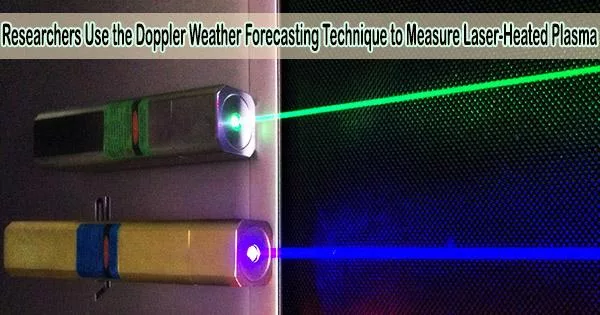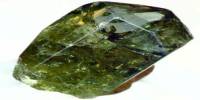In order to get insights into how strong lasers transform chunks of solid material into soups of electrically charged particles known as plasmas, scientists have adopted a standard weather forecasting technique.
Researchers may be able to take crucial measurements in inertial confinement fusion devices a theory being investigated as a means of harnessing fusion energy by applying this tried-and-true method in a novel setting. It may be environmentally friendly to generate electricity on Earth using this method, which powers the sun and stars, without emitting greenhouse gases or long-lived radioactive waste.
The researchers from PPPL, a national laboratory of the U.S. Department of Energy (DOE) run by Princeton University, have measured the thick plasma cloud created when a strong laser strikes a solid object. Atoms on the surface evaporated as a result of the tremendous heat, producing powerful X-ray light.
The Doppler effect, which causes ambulance sirens to increase in pitch as they approach and decrease as they approach, was used to determine the speed of the light. Meteorologists rely on this effect to measure the speed of thunderstorms.
You have to understand what these lasers create before you can find uses for them. This is fundamental stuff. These super-powerful lasers will have lots of applications in the future. We just don’t know yet what they will be.
Frances Kraus
Because dense plasma is generated by inertial confinement fusion facilities, such as the DOE’s National Ignition Facility at Lawrence Livermore National Laboratory, which last year generated more fusion power than it took to heat the plasma, physicists are interested in learning more about it.
The more effectively scientists can produce fusion, the more they will be able to comprehend the behavior of the dense plasma that results, which is ten billion times denser than the plasma inside magnetic tokamaks.
The outer and inner layers of the dense plasma cloud appear to be separated by a barrier, or sheath, as the researchers discovered. This finding shows that dense plasma generated by a laser behaves similarly to less dense plasma.
The discovery represents the first instance in which scientists have measured extremely thick plasma using the Doppler method. The experiment was performed using Colorado State University’s Advanced Laser for Extreme Photonics (ALEPH) facility.
According to Frances Kraus, lead author of a study presenting the findings in Physical Review Letters, the findings demonstrate that thick plasma exhibits behavior similar to that of other forms of plasmas behavior that researchers have not previously been able to directly witness.
Before this discovery, it was unknown to scientists if precise X-ray measurements could be made in thick plasma, which can obstruct such observations.
“Scientists did not believe that you could pick out the X-ray behavior within all of the other signals,” Kraus said. “But our diagnostic shows that you can.”
Since their creation in 1960, lasers have been utilized for a variety of operations, such as surgery, welding, and printing. The word “laser” stands for “light amplification by stimulated emission of radiation” and refers to a group of light rays that all have the same frequency.
The photon particles that comprise laser light are also all moving in the same direction and in the same orientation. It has become more important to comprehend the underlying properties of lasers as they have gotten more potent.
“You have to understand what these lasers create before you can find uses for them,” Kraus said. “This is fundamental stuff. These super-powerful lasers will have lots of applications in the future. We just don’t know yet what they will be.”
















